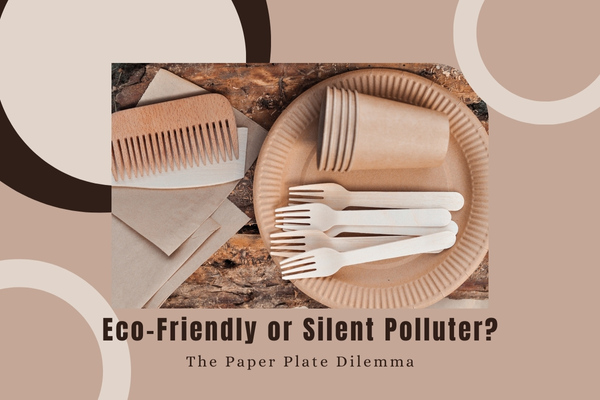Imagine you’re tossing a stack of paper plates into the recycling bin after a fun-filled barbecue with friends. Naturally, you’d think you’re doing your part for the environment, right? Well, I often find myself at that very crossroads, pondering the crucial decision—Eco-Friendly or Silent Polluter? In this bustling life of convenience and quick fixes, are we truly making eco-friendly choices, or are our everyday items contributing silently to pollution?
Paper plates seem like a godsend during parties and picnics where ease and efficiency rule. But have you ever stopped to wonder if these handy disposables actually live up to their “green” image once the party’s over? I’ve taken a deep dive into this pressing issue to reveal whether these ubiquitous dining aids are champions of sustainability or stealthy villains in disguise.
Here’s What You’ll Learn:
- The real scoop on paper plate recycling practices
- Eco-friendly disposables: myth or reality?
- A candid look at the Environmental Impact of paper plates
- Thought-provoking insights on balancing convenience and sustainability
- Exploring alternatives—how viable are they compared to traditional paper plates?
Are Paper Plates Recyclable?
When it comes to paper plate recycling, there are a few nuances we need to understand. Let’s dive right into the recyclability of paper plates and what exactly that means for our environment.
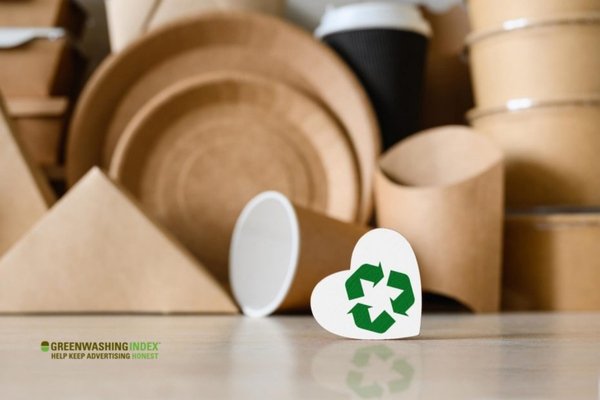
Why is recyclability important, and how does it apply to everyday items like paper plates? Recyclability is all about assessing products based on their ability to return to the production cycle without degrading their quality or usability. When it comes to recycling, not all materials are created equal.
Recycling paper products has pretty specific criteria:
- Cleanliness: The product should be free from food residue.
- Quality of Material: It should be made of high-grade paper to withstand the recycling process.
- Coatings: Many paper products have coatings that may hinder recycling.
Paper plates often fall short because they frequently contain food waste and grease. Plus, many of them have a thin plastic lining (to make them waterproof), which disqualifies them from being recycled like normal uncoated paper products.
Here’s what makes a product recyclable:
- It must be able to maintain its quality during the process.
- Contaminants should be minimal or non-existent.
- There needs to be a system in place for collection and processing.
Do most paper plates meet these standards? Unfortunately, they don’t. Because they’re designed for single use with food items, the residue left behind can contaminate the recycling batch. This means we’ve got quite a conundrum on our hands – convenience at potentially high environmental costs.
The Process of Recycling Paper Plates
Understanding how something gets recycled might change your perspective on using disposable products in general:
Step 1: Collection
Firstly, our used plates would have to make it into the appropriate bin – which often isn’t the case as many people toss them out with regular garbage due to contamination by food.
Step 2: Sorting
The collected materials then go through an intense sorting process:
- Workers separate contaminants and non-recyclables manually.
- Machines further sort by type and grade of material
If our hypothetical clean and uncontaminated plate passes this test (though rare), we move on!
Step 3: Pulping
In this phase:
- Water and chemicals break down fibers
- This creates a slurry where contaminants sink or get removed
Again, those pesky coatings pose an issue here unless specialized facilities can handle them.
Step 4: Decontamination
This is crucial as any remaining impurities are removed at this stage:
- Inks, glues, or any added elements are stripped away
- Clean fibers move forward
Step 5: Drying & Shaping
The purified pulp gets pressed and dried into sheets, which are then ready for:
- Making new recycled products
The final product might not even recall its humble beginnings as your picnic dinner holder. But remember – most paper plates don’t make it through this journey due mostly to contamination issues mentioned earlier.
Technically speaking, some types could be recyclable under perfect circumstances, but most aren’t due to either structural design features or improper disposal in everyday life. This definitely skews their standing towards being silent polluters rather than eco-friendly disposables.
So next time you’re packing for that outdoor barbecue bash or setting up for an easy cleanup event, think twice because even though those little disposable heroes seem innocuous enough, they may just pose bigger headaches down the line when trying to balance convenience with environmental ethics!
Are Paper Plates Eco-Friendly or Silent Polluter?
When we think of paper products, it’s easy to jump to the conclusion that they’re inherently eco-friendly – after all, they’re not plastic, right? But this is where we need to hit the brakes and ask ourselves: Are we overlooking details when it comes to seemingly innocuous items like paper plates?
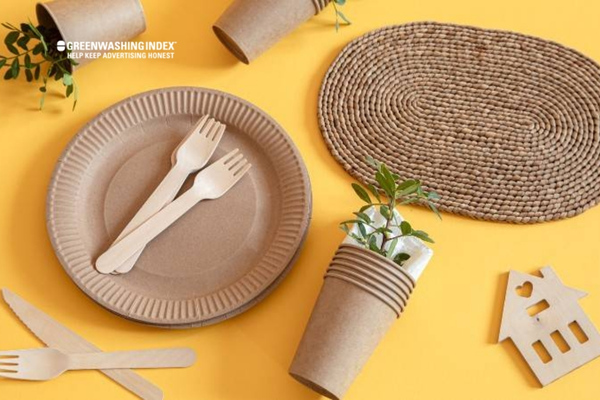
Environmental Impact of Paper Plates
Disposable paper plates are everywhere – from picnics and barbecues to birthday parties. They give us the ease of not dealing with a pile of dishes afterward. However, despite their convenience, these single-use friends may be more foe than friend to Mother Nature. Let’s break down how:
- Waste Contribution: Paper plates often end up in landfills because many recycling programs can’t process them due to food contamination. It results in mounds of waste that could’ve been avoided.
- Loss of Resources: To produce just one ton of paper plates, several trees must be cut down. This loss contributes substantially to deforestation.
- Energy Consumption: Manufacturing processes require significant energy usage, resulting in a higher carbon footprint.
- Chemicals Released: In the production process, papers are bleached and treated with chemicals, some of which can be toxic and contribute potentially harmful substances to our environment.
By highlighting these points, it becomes clear that the path from our kitchen tables to landfills is shorter for disposable paper plates than most other products.
Balancing Convenience with Sustainability
We love our conveniences, and I get it; who doesn’t? But sustainability requires us to weigh these conveniences against their environmental costs:
- Immediate Gratification vs Long-Term Impact: Sure, tossing out a used plate is gratifyingly simple – but every tossed plate accumulates into an ecological debt.
- Resource Management: It’s about managing resources wisely. We oughta to explore how many resources go into making something we use once and then throw it away without much thought.
Let’s consider some ways we can balance this scale:
- Be Selective: Use disposable plates only when absolutely necessary or when no water is available for washing reusable options.
- Conscious Disposal: If you must use them, dispose consciously by scraping off food residue and checking if your local recycling program accepts clean paper plates.
- Host Responsibility: Hosts favor biodegradable or compostable disposables over conventional ones.
Balancing convenience with eco-consciousness isn’t about swinging from one extreme of self-denial to another extreme of wastefulness – it’s about being informed and mindful of our choices.
Incorporating factors like these makes me seriously wonder whether what seems eco-friendly on the surface might indeed be a silent polluter upon closer inspection. As someone who holds our planet dear,I believe that taking such reflections into account is essential if we’re aiming for truly sustainable living patterns now and moving forward into future decades on this beautiful shared home—our Earth.
Unmasking the Truth about Paper Plate Manufacturing
When I host a backyard barbecue or have a bunch of kids over for a birthday party, paper plates are often my go-to for easy cleanup. But as someone who cares about the environment, I’ve had to ask myself what’s really going on behind the scenes in paper plate manufacturing.
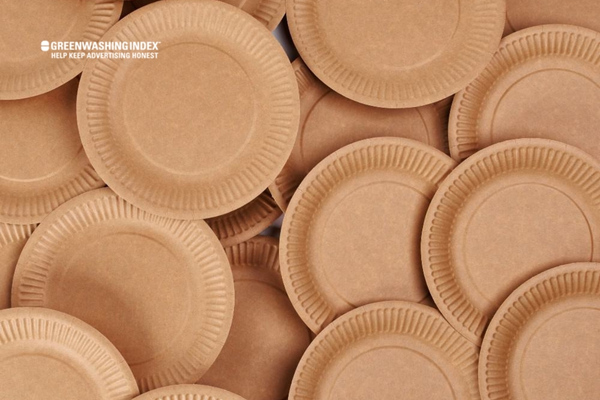
Are they an eco-friendly choice or am I unknowingly contributing to environmental harm? Let’s dive into the raw materials and production process of these disposable staples and evaluate their environmental footprint.
Raw Materials and Production Process
Breaking down the process of how paper plates are made shines a light on several factors: the resources we use, how we use them, and what kind of waste gets left behind. Here’s what typically goes into making these seemingly harmless products:
- Sourcing Raw Material: Most paper plates start with wood pulp from trees, which means logging is step one. Sometimes, recycled content is used, but that isn’t the norm.
- The Pulping Process: Wood chips are turned into pulp through mechanical or chemical processes that consume water and energy.
- Shaping & Molding: The pulp is formed into plate shapes—more water is used here to clean machines and move pulp slurry along production lines.
- Bleaching: Often, to get that pristine white look, pulps are bleached—a procedure involving chemicals like chlorine dioxide.
- Drying & Cutting: The molded plates need to be dried (using more energy) and then cut into appropriate sizes.
By-products Generated:
- Wastewater laden with chemicals from bleaching can pollute local waterways if not properly treated,
- Offcuts from trimming edge waste contribute to solid waste.
Taking all this into account, you can see just how resource-intensive it can be to produce something intended for single use—and that’s before considering any coatings added for durability or print designs applied for aesthetics.
Environmental Footprint of Paper Plate Production
Now let’s talk about those footprints my mom always reminded me not to track inside—only these aren’t mud; they’re carbon footprints:
- Logging: Harvesting trees has multiple impacts, including loss of wildlife habitat and increased carbon emissions from disturbed soil and machinery used in logging operations.
- Transportation: Moving raw materials requires trucks, ships, or trains—all emitting CO2 along their journeys.
- Manufacturing Process: Factories consume electricity (often from fossil fuels), creating emissions; excessive water usage also affects local ecosystems.
And once those trucks roll out full of neat stacks ready for picnics everywhere:
Packaging: More resources used (plastic wrap, anyone?) and more energy consumed getting products onto store shelves.
Disposal: After mere minutes of use at your picnic table:
- Many end up in landfills because recycling facilities may not accept them due to food contamination or plastic linings,
- Those decomposing create methane—a greenhouse gas more potent than CO2.
In understanding this chain reaction—all starting with my grabbing a pack off the shelf—I’ve realized it’s tough to justify calling traditional paper plates ‘Eco-friendly.’ Yes, even though they do start with biodegradable material—the trees—the story just isn’t as simple as I hoped when considering their lifecycle impact on our environment.
With each step highlighting not only resource use but subsequent waste creation too—it’s clear eco-friendliness falls short against silent pollution when talking about traditional paper plate production. This compels me (and should compel you, too!) to think twice before reaching for disposables at your next cookout or celebration.
Alternatives to Using Disposable Paper Plates
When it comes to dining essentials, paper plates have long been a staple for picnics, barbecues, and other informal gatherings. However, as we become more conscious of our environmental footprint, it’s important to consider alternatives that are more sustainable and gentle on our planet. So let’s dive into some options that could take the place of your stack of disposable paper plates.
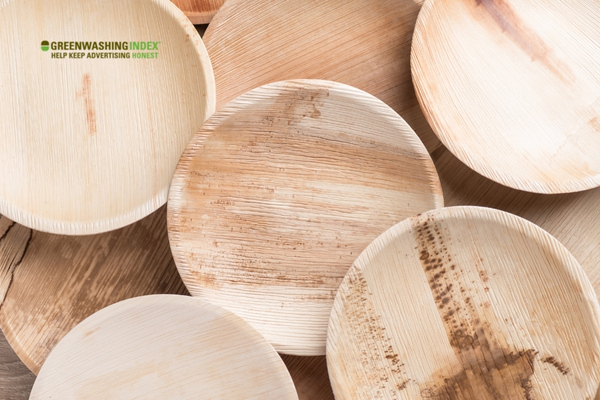
Reusable Dinnerware – A Sustainable Option
Reusable dinnerware is hands-down a better alternative compared to disposable paper plates when thinking about sustainability. Here’s why:
- Longevity: Good quality reusable dinnerware can last for years, dramatically reducing the waste generated from single-use items.
- Materials: Often made from glass, ceramic or stainless steel — which are resource-intensive to produce but offer a much longer lifespan than paper products.
Let’s break down the positive impacts of opting for reusable dinnerwear:
- Decreased Waste: By using dishes that you can wash and reuse time and again, you’re cutting down on the sheer volume of waste needing to be managed.
- Energy Conservation: Even though washing dishes consumes water and energy, the overall environmental impact is often less than producing single-use items repeatedly.
- Cost Effectiveness: Over time, investing in durable dinnerware saves money as opposed to constantly buying disposable options.
It’s undeniable that switching to reusable dinnerware requires an initial investment and ongoing effort in terms of cleaning. But when considering the long-term benefits both environmentally and financially — it certainly pays off.
Eco-Friendly Disposables – Are They Really Green?
When I think eco-friendly disposables might be the perfect middle ground between convenience and sustainability. But are they truly green? To evaluate these claims:
Material Source:
- Biodegradability: Eco-friendly disposables often boast materials like bamboo or palm leaves, which decompose much easier than traditional paper plates coated with plastic.
Assessing Production Process:
- Understanding how these alternatives are produced is crucial — if their manufacture requires extensive resources or generates significant emissions, they may not be as green as claimed.
Life Cycle Analysis:
- It entails examining every stage, from raw material extraction through disposal; this gives us a complete picture of an item’s true environmental impact.
Here are key points regarding eco-friendly disposables:
- Certifications: Look for products with reputable certifications, ensuring their ecological claims have been verified.
- Compostability: Are they compostable at home, or do they need a commercial facility? Not all regions have access to such facilities, which can negate the potential benefits of compostable disposables.
Evaluating eco-friendly disposables includes considering whether their convenience outweighs any potential drawbacks. When possible, choose items proven environmentally preferable through all stages, including disposal processes that align with your local resources.
Preferring reusable dinnerware is undeniably more sustainable in comparison with disposable paper plates while exploring bio-based disposables entails careful consideration of their holistic impact on our environment before labeling them as ‘green’.
As consumers, making informed decisions reflecting both ecological considerations and practicality plays a vital role in reducing our collective burden on Earth’s fragile ecosystems.
FAQs
Why aren’t all types of paper recyclable?
Not every type of paper is built the same. Some are laced with plastics, chemicals, or food residues that make the recycling process tricky and inefficient. That’s why stuff like greasy pizza boxes or certain glossy papers get booted from the recycling club.
Are there any truly eco-friendly disposable dishes?
Yeah, there are eco-friendly disposables out there made from materials like bamboo, palm leaves, or sugar cane that biodegrade way better than traditional paper plates. Just keep an eye out for third-party certifications to make sure they’re legit.
How can I reduce my use of disposable tableware?
Easy steps include switching to reusable dishes for everyday meals and using compostable options for big events where you need disposables. Bringing your own containers for takeout is another game-changer in cutting down waste.
Conclusion
It’s evident that the debate around paper plate recycling and its environmental footprint is far from black and white. While they offer convenience, paper plates are not always the eco-friendly choice they’re made out to be, especially when you consider their full life cycle – from resource-intensive production to disposal challenges. Balancing sustainability with practicality is key, and it often means looking beyond single-use options.
Key Takeaway Points:
- Paper plates may not meet recyclability standards due to food contamination.
- The environmental cost of convenience is significant with disposable items.
- The production of paper plates has a notable ecological impact.
- Reusable dinnerware presents a more sustainable option compared to disposables.
- Claims of eco-friendliness by disposable alternatives need careful scrutiny.

